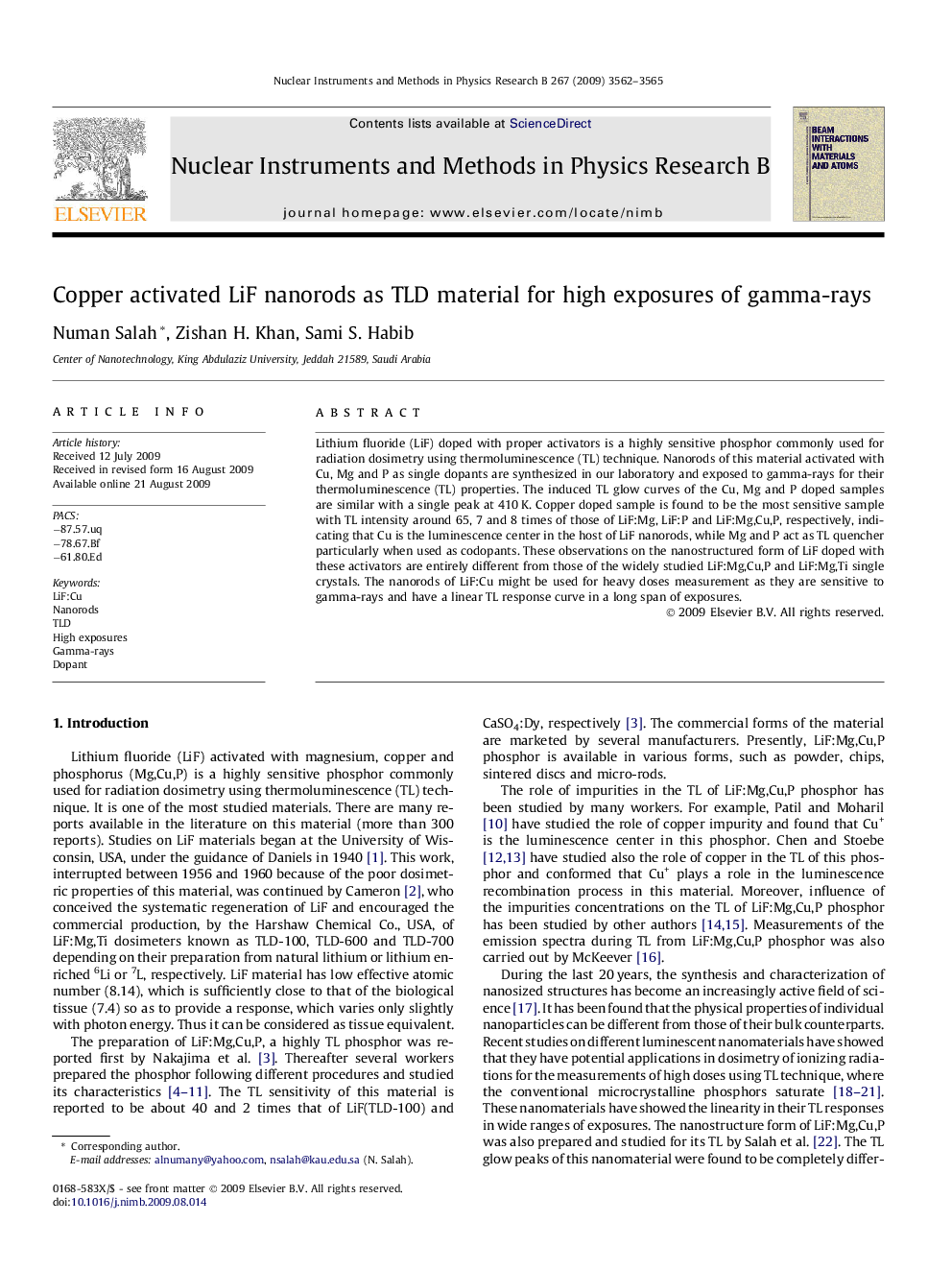| Article ID | Journal | Published Year | Pages | File Type |
|---|---|---|---|---|
| 1686839 | Nuclear Instruments and Methods in Physics Research Section B: Beam Interactions with Materials and Atoms | 2009 | 4 Pages |
Lithium fluoride (LiF) doped with proper activators is a highly sensitive phosphor commonly used for radiation dosimetry using thermoluminescence (TL) technique. Nanorods of this material activated with Cu, Mg and P as single dopants are synthesized in our laboratory and exposed to gamma-rays for their thermoluminescence (TL) properties. The induced TL glow curves of the Cu, Mg and P doped samples are similar with a single peak at 410 K. Copper doped sample is found to be the most sensitive sample with TL intensity around 65, 7 and 8 times of those of LiF:Mg, LiF:P and LiF:Mg,Cu,P, respectively, indicating that Cu is the luminescence center in the host of LiF nanorods, while Mg and P act as TL quencher particularly when used as codopants. These observations on the nanostructured form of LiF doped with these activators are entirely different from those of the widely studied LiF:Mg,Cu,P and LiF:Mg,Ti single crystals. The nanorods of LiF:Cu might be used for heavy doses measurement as they are sensitive to gamma-rays and have a linear TL response curve in a long span of exposures.
